First settled by Dutch farmers in 1628, the following century saw Saska Kępa become the hunting ground of choice for Warsaw’s nobility. However, it wasn’t only wild beasts that the local aristocracy had their hounds out for; it was here in the palaces of Saska Kępa that they would also conduct their secret affairs with local maidens. By the 19th century the district emerged as a favourite weekend destination for the bourgeoisie, who would sail across the river to enjoy the bowling alleys, shooting ranges and fairground attractions that had by then sprung up around the area. The early years of the 20th century saw the area really take off as the desirable residential district of the aristocracy and the inter-war years saw a particularly intense period of development as the monied classes flocked across the river to what had become Warsaw’s best piece of real estate. After the war the communist authorities attempted to keep an eye on the middle classes as well as the embassies, building concrete horrors to house members of the militia and secret police. In fact, Władysław Gomułka, the first secretary of the United Polish Workers Party (1955 – 1964), liked the area so much he lived here in a flat on ul. Saska 109. A plaque that commemorated his prolonged presence in the neighbourhood had to be taken down due to persistent vandalism.
Travelling from the city centre across the Poniatowski Bridge is a simple task, just hop on any tram heading in the direction of the bridge from Al. Jerozolimskie and hop off at the first stop over the bridge, opposite the imposing National Stadium. Ul. Francuska - Saska’s main drag - lies immediately to your right. Unfortunately your first taste of this pleasant district known for its serenity will be Rondo Waszyngtona (the George Washington Roundabout) - a battlefield of tramlines and constantly vandalised concrete tunnels that connect football fans to the National Stadium. Escape the chaos and begin your Saska safari in earnest by crossing al. Zieleniecka to hit Skaryszewski Park. To penetrate the true heart of Saska you need to take a walk down its principal high street, ulica Francuska. Lined with low level housing, private boutiques and popular bars and restaurants - like the off-beat OSP Saska Kępa, highly regarded Dom Polski - most of the area’s charm lies in its cafe culture and unique atmosphere of its eateries, rather than beating tracks between tourist attractions. That said, don’t miss taking short detours to Szara Cegla or PROM Kultury Saska Kępa to catch a bit of its arts vibe. With everything ‘just down the road’ or ‘two minutes away’ Saska resembles a close-knit village, but also has a surreal ‘crossroads of the world’ atmosphere. Every street corner comes with arrows pointing in exotic directions: Yemen, Colombia, Iraq, Argentina... Welcome to Embassyland: there are a total of 17 embassies in the immediate area, all occupying impressive villas, and making Saska one of the city’s most multicultural neighbourhoods.
Notable Residents
Saska Kępa has always traditionally been home to Warsaw’s artists and bohemians. Noted residents have included poet and songwriter Agnieszka Osiecka, a bronze figure of whom stands on the corner of ul. Francuska and ul. Obrońców. Painter and art critic Jan Cybis’ former residence at ul. Walecznych 28 is commemorated with a rather attractive plaque bearing his signature. A plaque on sculptor Stanisław Sikora’s house at ul. Obrońców 28/3 commemorates Pablo Picasso’s passing visit and the garden is also well worth a look with its numerous statues and installations. The world famous Polish contemporary composer Witold Lutosławski also lived at ul. Zwyciezców 39 (apartment 10) until 1968. His work may be hard going for the uninitiated but his importance is such that the Polish parliament named 2013 ‘The Year of Lutosławski’. More recent famous residents include the hugely popular singer/songwriter Stanisław Soyka, who can regularly be seen having a drink.
Further Reading
SAS, by Grzegorz Piątek and Jarosław Trybuś.
Don’t be fooled by the title, this is not another Andy McNabb book about the Special Air Service running around the Middle East. It is, in fact, a great little book about the varied buildings of Saska Kępa, one of the great attractions of the area. For architecture buffs, this illustrated architectural atlas of the area is a ‘must buy’ item before you cross the river. The book deals specifically with the avant-garde, modernist golden years between 1926 and the outbreak of WWII. Each page of this handsome little 72-page tome refers to a separate building or monument in the area. A short write-up appears in both Polish and English and the objects included are finely illustrated by designer Magdalena Piwowar in a simple, plan-like way, which helps to emphasise the geometric designs of the buildings. The publication rapidly became a cult bestseller in the area and makes for a fascinating and attractive little souvenir of your visit to Saska Kępa. Published by the Fundacja Centrum Architektury, it costs 35zł and is available at most galleries and bookshops around town.


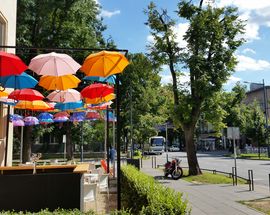

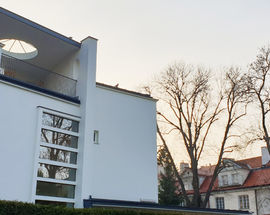

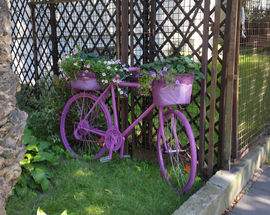
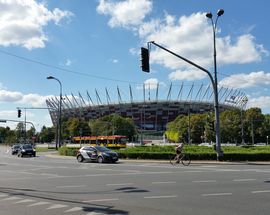
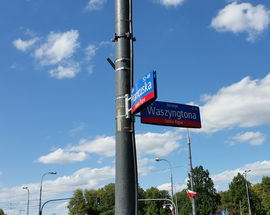
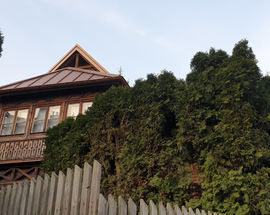

Comments